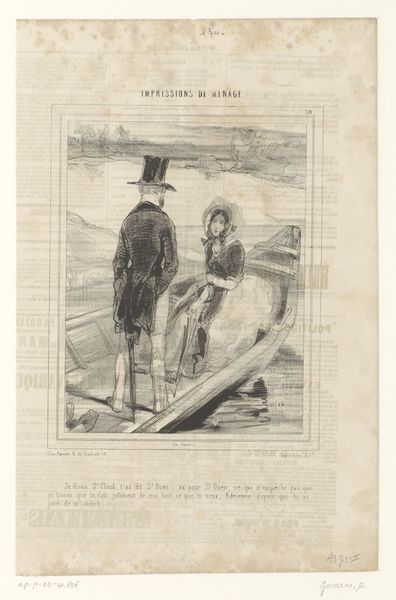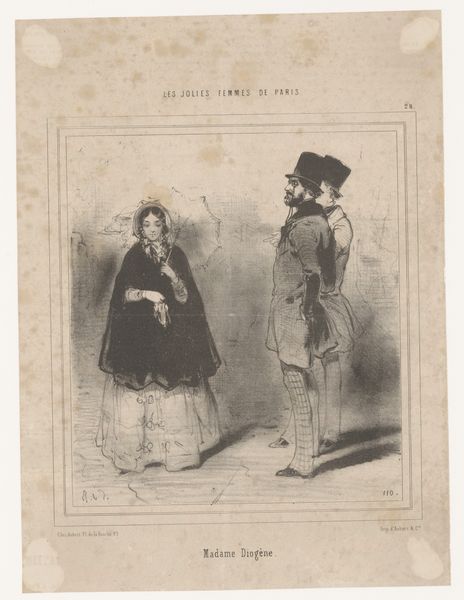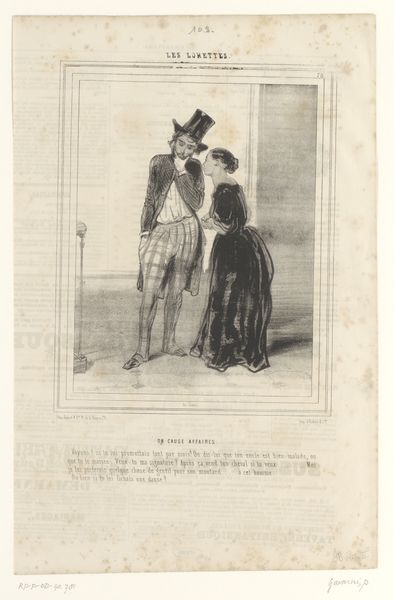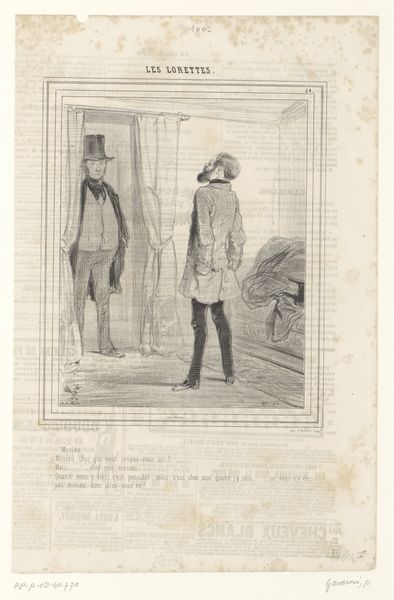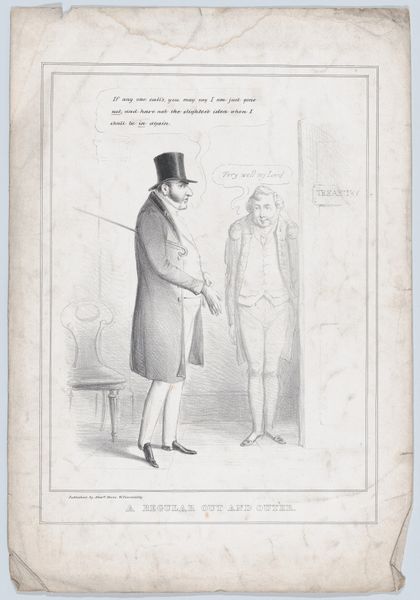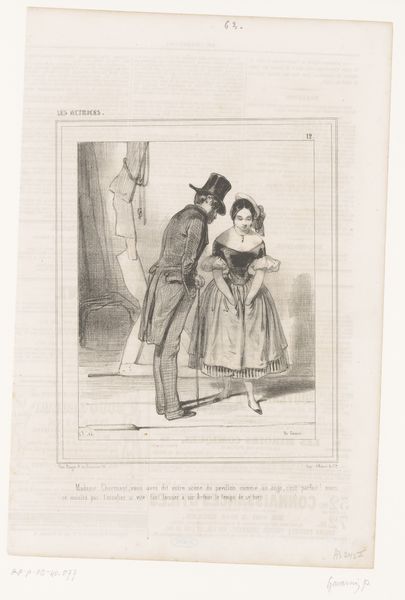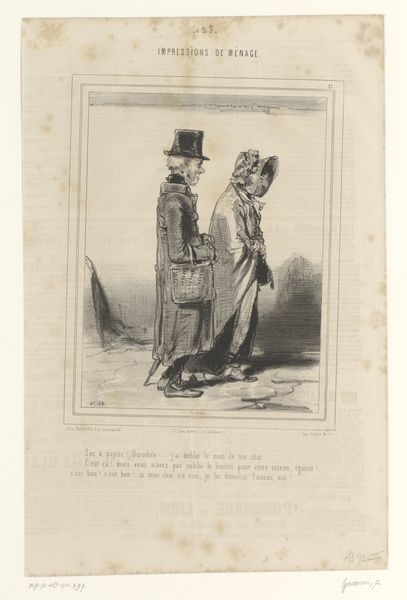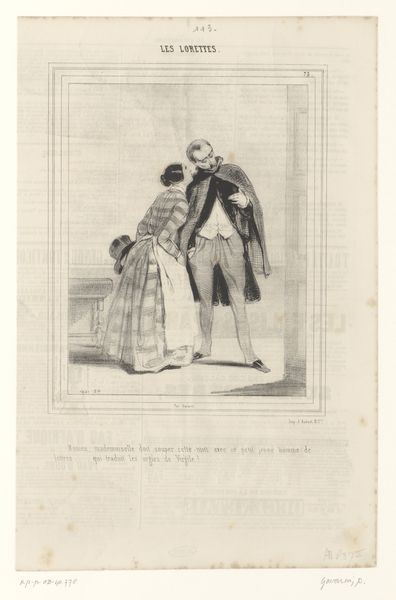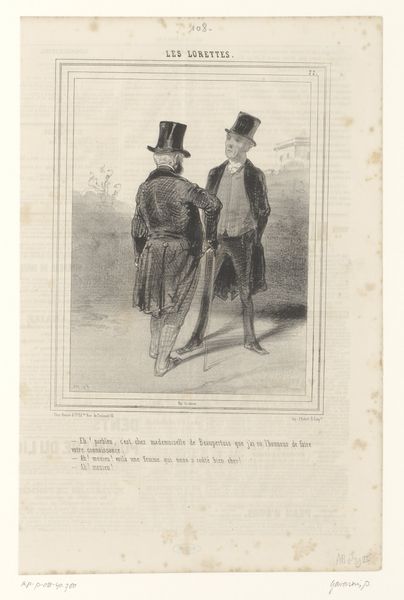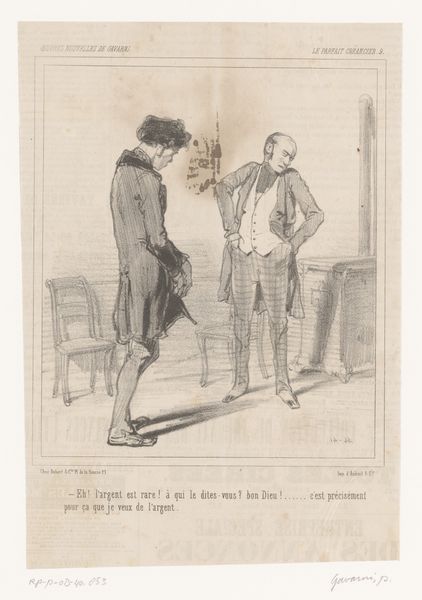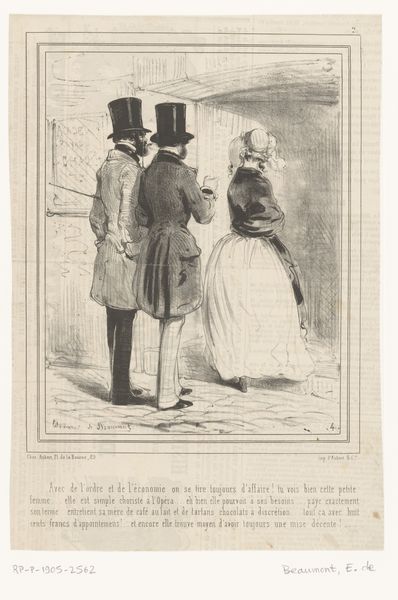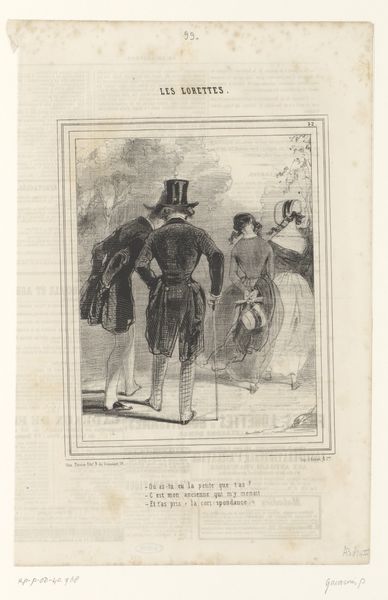
drawing, lithograph, print, paper, ink, engraving
#
drawing
#
lithograph
# print
#
caricature
#
old engraving style
#
paper
#
ink
#
romanticism
#
19th century
#
genre-painting
#
engraving
Dimensions: height 362 mm, width 236 mm
Copyright: Rijks Museum: Open Domain
Curator: Editor: This is "Young Woman with an Old Man Selling Firewood" by Paul Gavarni, created in 1843. It's a lithograph, so it's been printed, making it feel a bit like a mass-produced image even though it depicts what appears to be a unique, possibly romantic encounter. What are your initial thoughts about how the materials used relate to its cultural context? Curator: Well, lithography allows us to consider how Parisian society consumed images in 1843. This wasn't a unique artwork for a single wealthy patron, but a commodity, reproduced and sold. Think about the labor involved in making and distributing prints like this – who benefits and how? Also, note that it's classified under theme as a 'caricature.' Editor: So, it’s not necessarily meant to be a serious commentary, but more of a satirical piece for the public. Does the 'genre painting' aspect connect with that idea as well, sort of downplaying a classical idea of fine art by showing common folks? Curator: Precisely. The “genre painting” categorization speaks to this. These prints were consumed as social commentary. Let's dig deeper: Observe how the woman is positioned. Is she a consumer? What’s being sold here? Is it merely firewood? And consider, what kind of labor might the woman engage in versus the old man? How are those labors viewed differently? Editor: That's an interesting point about different types of 'labor' being on offer here. The romantic style of the engraving hints at ideas that aren't being explicitly said, so the material and process also play into that consumption. It feels like Gavarni is less interested in glorifying love than exploring its economics. Curator: Absolutely. We can really get a feel of how this piece fits in, culturally, when considering the materiality and how that impacted audience. How did our analysis on that and subject help reframe any initial notions? Editor: Initially, I looked at it as a scene with two figures. But framing it with labor and consumption makes me consider its much wider social connections and intent. Curator: Exactly. Materialist analysis takes us beyond just admiring the image, and right into understanding its place within its time.
Comments
No comments
Be the first to comment and join the conversation on the ultimate creative platform.
